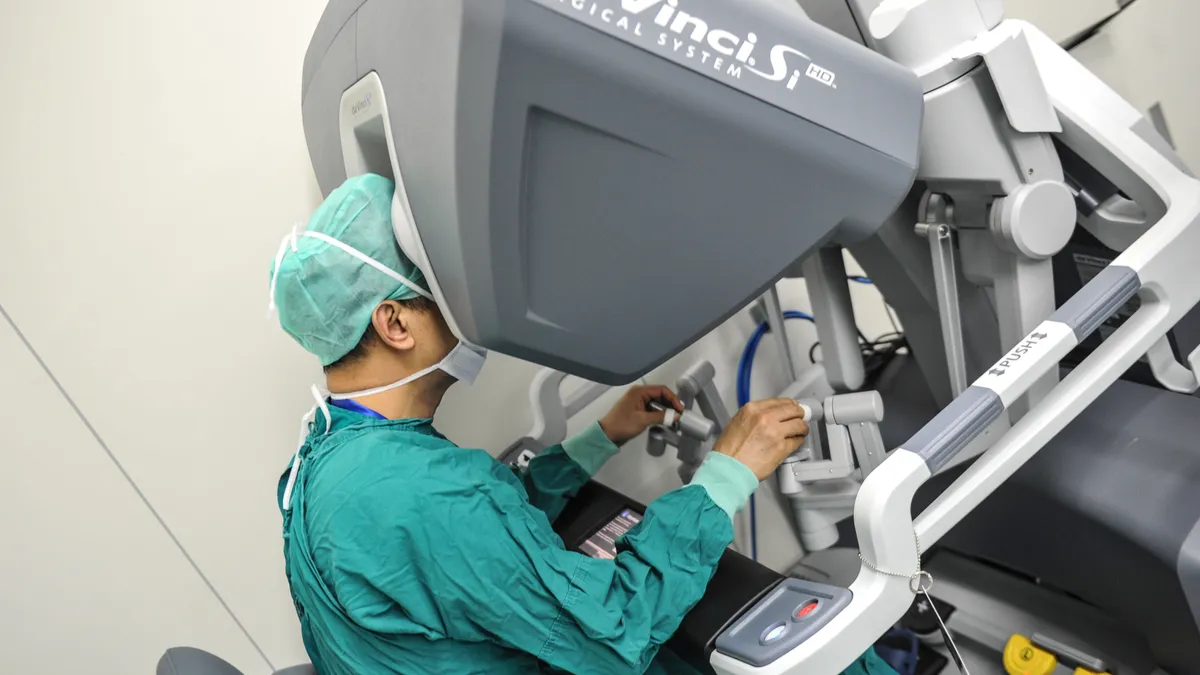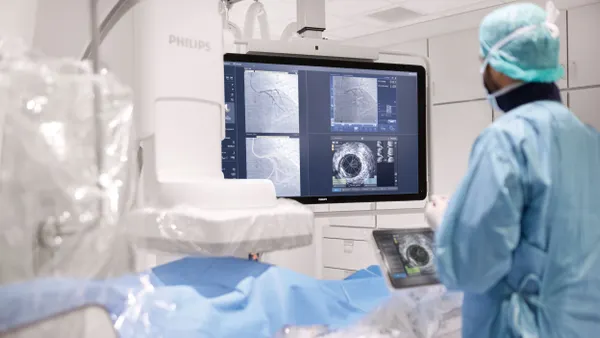Dive Brief:
- Intuitive Surgical’s robotic surgery dominance is “increasingly harder to break at many existing customer sites,” according to analysts at BTIG.
- The analysts reached the conclusion after attending the Society of Robotic Surgery’s 2022 meeting. While noting that the landscape is “far more expansive” than in the past, the analysts said Intuitive’s encircling of its robots with analytics, imaging and more makes it harder for high-volume users to move to rival technologies.
- Intuitive’s competitors, including larger challengers such as Johnson & Johnson and Medtronic, will need an “ecosystem approach” that goes beyond hardware to overcome the cost of switching.
Dive Insight:
Companies including Globus Medical, J&J, Medtronic, Stryker, Vicarious Surgical and Zimmer Biomet presented at the event, reflecting the rise in the number of businesses targeting the robotic surgery sector in recent years. The arrival of multiple rivals raised questions about the position of Intuitive, which enjoyed a near monopoly in the market for years.
The competitive narrative around Intuitive has now “dissipated,” the analysts wrote in a note to investors. The shift follows setbacks to robotic surgery development programs at J&J and Medtronic, as well as Intuitive’s perceived success in entrenching its devices with existing customers.
Intuitive’s ecosystem of “advanced analytics, state-of-the-art imaging, virtual and augmented reality, cloud computing” and more “make it harder for high-volume robotic surgeons and institutions (with existing robotics programs) to shift away to emerging competitive systems,” say the analysts. One surgeon discussed the difficulties of switching and why high-volume physicians will have a tough time converting.
“Surgeons likened it to pilots who have to gain separate licenses on various models of planes in order to safely fly various different plane types. While this can certainly be addressed, we do think as [Intuitive’s] ecosystem grows, the switching costs will continue to rise, making it harder for companies such as [Medtronic] and [J&J] to make initial inroads on existing customer sites,” the analysts wrote.
While noting the barriers to switching, the analysts did see technologies that may have advantages over Intuitive’s devices. Some surgeons said they appreciated the open console design of Medtronic’s Hugo and liked the flexibility on the number of arms, although they also saw some lower responsiveness in movement.
The analysts also noted that smaller companies have been able to re-imagine and develop newer robotic systems “out of necessity to offer differentiation,” that have little physical resemblance to the systems developed by Intuitive and the other large players.
“For many it's still 'to be determined' but we think much smaller-form factor robotics present the most interesting and viable alternatives to larger-form factor systems today,” they wrote.













